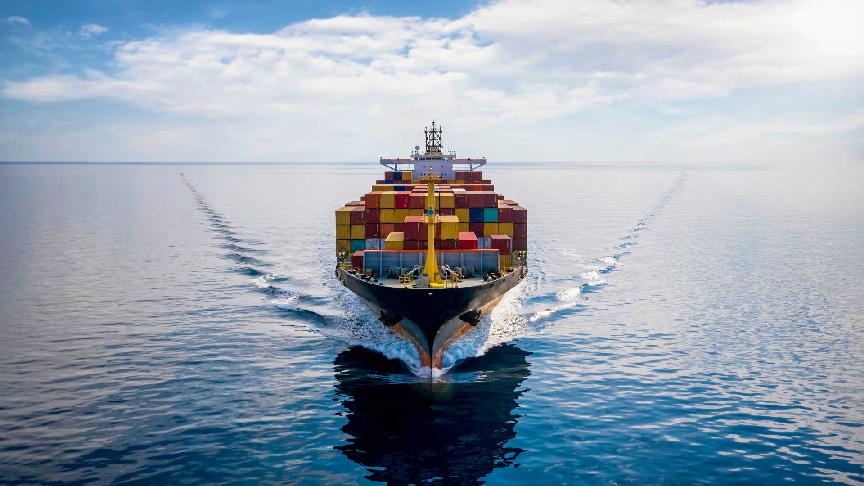Based on UN export data that covers the past 74 years, Sea Intelligence studied the shift in trade across multiple regions from 1948 to 2022. In this article, we will also look at the trade lanes with the biggest market share at the moment.
Development of merchandised exports since 1948
The data shows that there has been a boom in global trade after WWII, mainly from Europe and North America. However, throughout the years following the war, trade trends fluctuated. Global merchandised exports from Europe, for example, peaked in the early 1970s, taking almost 55% of international trade. But it gradually declined, reaching 38% in 2012. Since then, the percentage has remained relatively stable, and it is now estimated at 36%.
Data for North America reveals that exports from the region constituted about 29% of global trade in 1948. This was the highest percentage the region had over the study period. North America’s export shares then dropped to 15% in 2002 and are now estimated at around 11%.
The development is the opposite when it comes to Asia, reveals the Sea Intelligence analysis. Merchandised exports from Asia generally maintained an upward trend over the entire 74 years. “A period which has seen the Asian economies take off as the world’s production centre,” writes the analysis firm.
Starting with around 12% of global exports in 1948, Asia grew its share to 27% in the early 1980s. By 2012, the region took hold of nearly 40% of global exports, and its percentage is now estimated at 43%.
What about trade lanes after the pandemic?
The carriers are now the best judge when studying the most lucrative trade lanes after the pandemic. Analysts argue that though the market has seen a global drop in demand, Asia-North Europe retains the biggest business in the sector with 21% of total capacity. Asia-North America follows with 18% of sector capacity.
A report by Shipping Watch highlighted how carriers are distributing their capacities across trade lanes taking several major carriers for estimation.
MSC, the largest container carrier in the world, is deploying the majority of its shipping capacity on Asia-North Europe, according to analysts. This also applies to the second-largest carrier, Maersk, which deploys 22% of its fleet capacity on this trade.
As the second most popular route for the two carriers, MSC has nearly 14% of its capacity on the Middle East and India lane and around 13% on services from and to Africa. Maersk, on the other hand, deploys 18.4% of its capacity in Latin America and 18% on the trans-Pacific, reports Shipping Watch.







